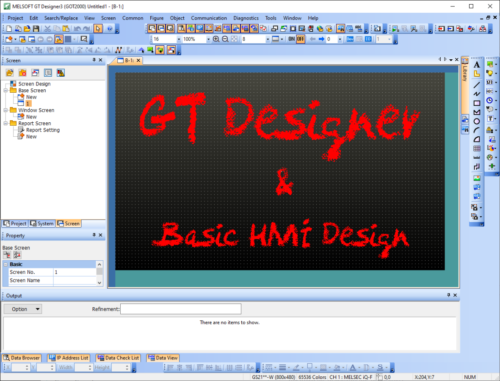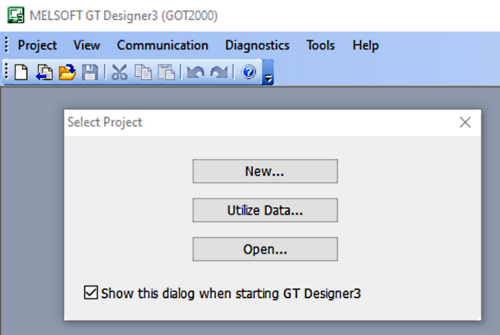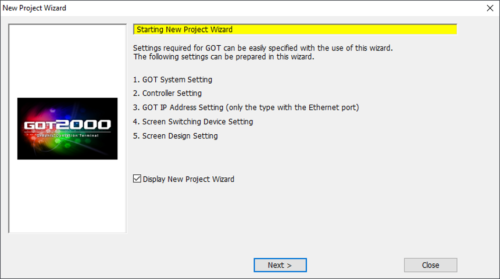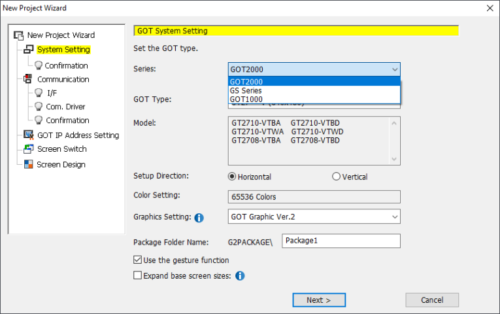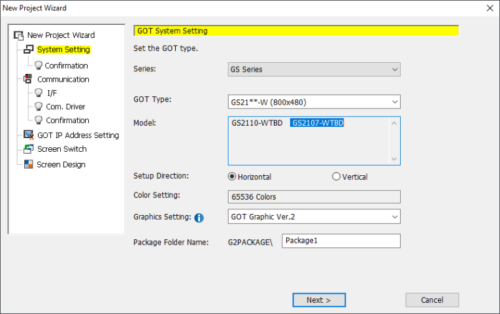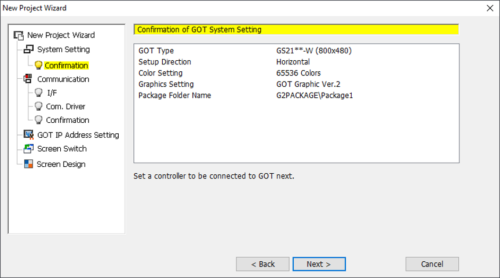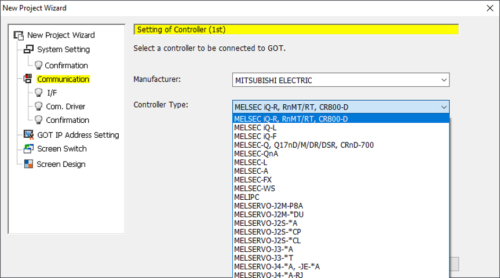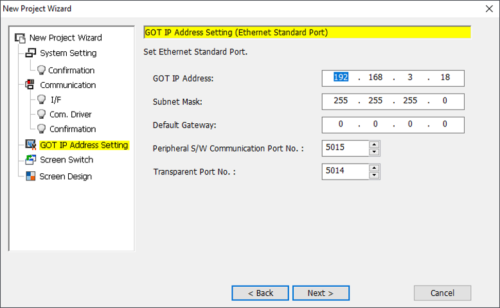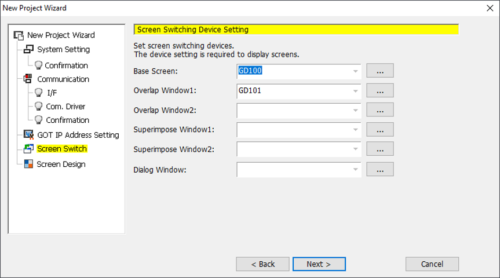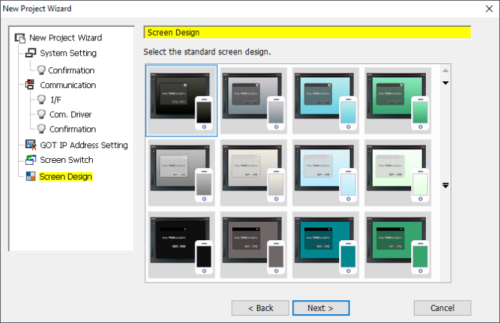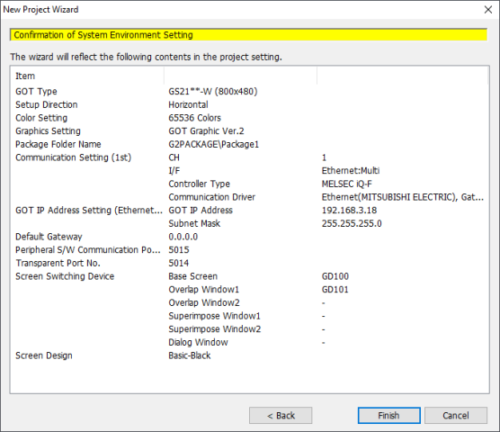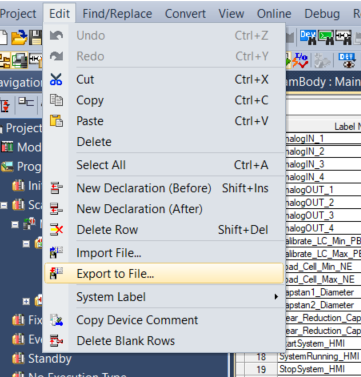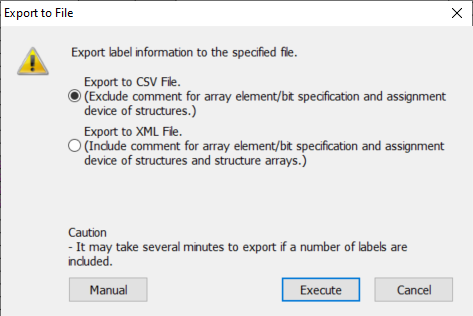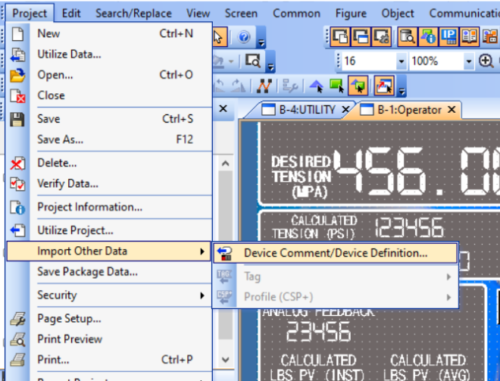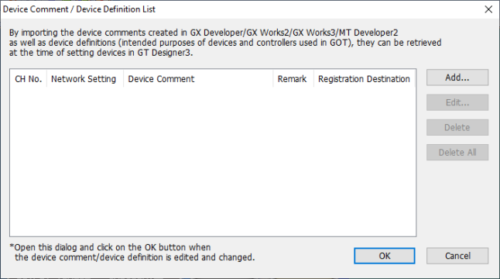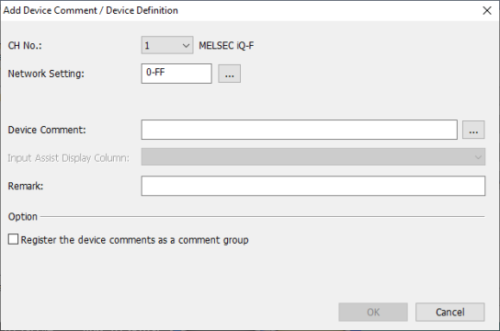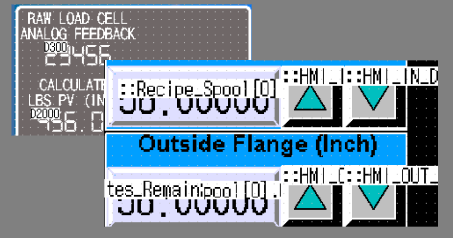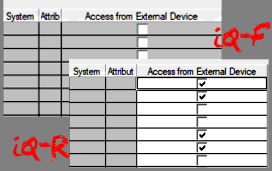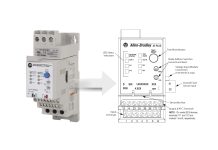
In today’s article I walk through the initial steps of setting up a new Mitsubishi HMI project, including creating a project, importing the PLC symbol database, and more.
Focusing on the same principle that you can make something difficult or simple, the GOT Designer software for Mitsubishi HMIs can let you do just that.
You can create a project that just does the simplest of things from push buttons and numeric displays, to a combination of more advanced data logging displays or using background scripting that copies, renames, and deletes files that are written over an FTP connection from another non-Mitsubishi controller.
I’n today’s article we’ll start our new HMI application by creating a project in GT Designer 3 by way of the “New Project Wizard.”
Figure 1 – Initial Dialog
Once the application has started, we’ll select “Project” and click “New”. You can also just simply press the “New…” button on the dialog window that pops up when the software starts.
The new project wizard will open up and ask for you to press “Next” to start cycling through the wizard’s steps.
The first step is where you can select items that will set the unit up for a traditional horizontal display or maybe a vertical display. The vertical display setup is good for mounting in the side of an enclosure or maybe for easier display of some graphics that are better viewable when tall instead of wide.
Figure 2 – Starting New Project Wizard
Figure 3 – Select Model
Simply stepping through the project creation wizard will get you a nice easy intuitive start.
In the next step, you will select the type/model you are planning to use, being sure that the model you want to use is shown in the “Model:” box after you select the series (GOT2000, GOT1000, or GS Simple series).
For this example, we will pick a GS Series model. We then verify that the 7” (GS2107) model we want is in the list. Here is the GS2107-WTBD is shown as one of the options.
Figure 4 – Verify PN of target Model
Check out our unboxing of a GS21 HMI here, as well as an overview of the entire line of Mitsubishi HMIs here.
Once you click next, verifying the model you want, you will then select the processor target type the HMI will be connecting to in your system. For this example, I chose an iQ-F series. This would be for the relatively new FX5 (also FX5U or FX5UC) series PLC.
Figure 5 – Confirm Setup
Figure 6 – Selection of Target Controller
Check out our unboxing of a FX-5 PLC here, as well as our first time programming it here.
With this basic connection example, we are choosing to use an Ethernet connection. So next you will then set up the IP address settings and some screen switching and window controls words as well as a basic screen design theme.
After these three windows, you’re almost done with the creation of the new project. On the final window, you just should verify the setup and press the final “Next”. You can also go back if needed at any point.
Figure 7 – Enter Desired IP Information
Figure 8 – Run Screen and Window Switching Devices
Figure 9 – HMI Color Theme
Figure 10 – Final Verification of Wizard Setup
When in designer and dropping in objects to control your system, you can either enter a device number (like D150 or M10) or use a label in some cases.
Just entering the desired device number would be the simplest way to set up the interfacing between the PLC and the HMI, but it could get complicated when adding to the project later or if integrating into an existing system.
If you have the correct controller, you can also export the symbol database to be imported into GT designer and use the symbols instead of the devices.
This is a nice way to not only see exactly what the device is, but also the structure type it is part of if you have set up multiple instances of similar devices in the code.

In the PLC program, select the edit pulldown and “Export to File…”. This will be the CSV formatted file to import to GT Designer. Be sure you select the “Export to CSV File” radio button before pressing Execute.
Figure 11 – Export of CSV from GX Works3
Figure 12 – CSV File Type Selection
Once that is complete, the next step is to go back to your GT Designer. In your project, select the “Project” pull-down, “Import Other Data”, and then “Device Comment/Device Definition…”.
You will then need to add the file. Select “Add” and then press the “…” selection button on the next dialog window to browse for and select the “Device / Comment” file.
A standard windows browser will open. Browse to the location of the CSV file you exported from your PLC file in GX Works3. Select it and press open.
Figure 13 – Import to GT Designer
Figure 14 – Add Device File Dialog
Figure 15 – Browse for CSV File
Once complete, you will be able to select the Symbols in place of just a device address.
The more complicated your system, the important it becomes to use tools like label identification to be sure the project stays organized and clear for future troubleshooting or use in other similar projects.
Figure 16 – Device or Symbol Display on HMI
The downside of using the more economical FX5 is that you can only use the devices (i.e., D, M, SD, etc) and not the associated labels. The use of exported labels is not permitted on the iQ-F line.
If looking at the device display on the HMI while in design mode, you will see only a D# for instance instead of a “::LABEL_TEXT…” shown on the object set up on the HMI.
While looking at the label database you will see the option for allowing “Access from External Device” (last column to the far right).
When checked, this allows the symbol to be exported and used in the GOT file as we set up above.
In the image below you can see the difference between an iQ-F (FX5) database that does not allow the export and an iQ-R (R04CPU) database file that does permit it:
Figure 17 – Permit or Not of the External Device Usage
How you use this tool or if you need it at all depends on the complexity and size of your project. It makes for easier automation with the proper knowledge and planning upfront.
Stick to the documentation and naming that makes sense and keep it simple to understand. If you do that, regardless of the complexity of the project, 10-years down the road you will still be able to understand what you did and others will too.
I promise you, they will appreciate it.
Written by Paul Hunt
Senior Automation Engineer and Freelance Writer
Have a question? Join our community of pros to take part in the discussion! You'll also find all of our automation courses at TheAutomationSchool.com.
Sponsor and Advertise: Get your product or service in front of our 75K followers while also supporting independent automation journalism by sponsoring or advertising with us! Learn more in our Media Guide here, or contact us using this form.
- Mitsubishi PLCs: Brief History and Hardware Overview - August 2, 2022
- Mitsubishi PLCs: FX5 vs iQ-R - February 10, 2022
- How To Register and Use a Device Profile in GX Works3 - November 9, 2021

Discover more from The Automation Blog
Subscribe to get the latest posts sent to your email.


